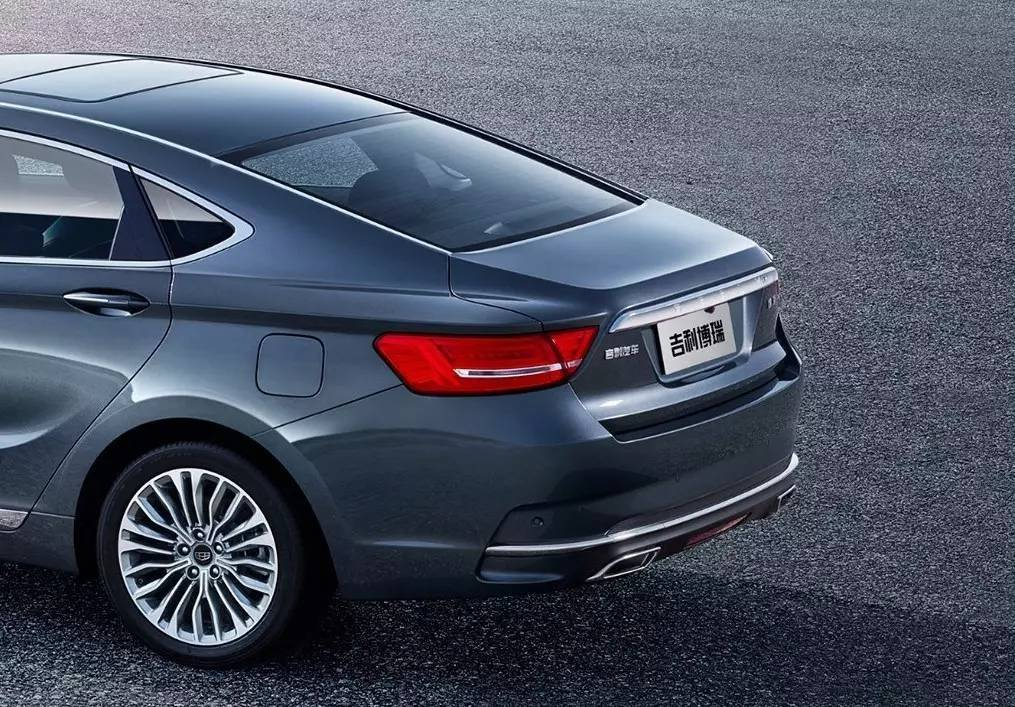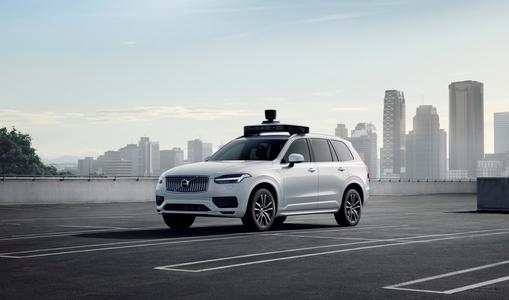Translation
This is a century-long revolution in the automotive industry full of opportunities and challenges. Traditional car companies can either ignore it or self-disrupt, and everyone has their own choices. This is a new marathon race without end, only a beginning, without methods, only a direction. This was said by Li Shufu, the chairman of Geely Group, at an internal meeting. No, he is now called Eric.
With the rapid development of intelligent electric vehicles in recent years, software-defined cars have become a consensus in the industry, and governments and capital have visions of a bright future in the era of autonomous driving.
For car companies, intelligent electric vehicles are no longer a “trend” or a “future,” but an urgent and important matter at present.
However, the hot topic of domestic electric vehicles is currently focused on “Tesla.” The scenes of various brand fan circles competing with each other on the Internet are vivid.
Looking back at the traditional fuel vehicle brands that are lagging behind the current pace, their electric vehicle products are introduced one after another, and the magical fuel-to-electricity products seem to be more like attempts to respond to the government’s dual credit policy and explore the new energy consumption market.
There is no scene of “fans clashing” on the Internet. Sometimes, for a brand, the worst thing is not that no one praises you, but that no one criticizes you.
For Geely, it has also experienced many challenges in the development of a single brand, such as “the best pure electric vehicle in the eastern hemisphere.”
But these do not affect the overall situation, because that was just a small attempt. For a company, what is more important is continuous learning, continuous summarizing, and continuous growth.
I think that tracing the major decisions of a company in its own development history can largely explain how the company will respond to future development trends.
Therefore, I plan to talk about what Geely wants to do based on its development history and Eric’s recent speech on “six insights.”
Early Years
To be frank, I have a good impression of the Geely brand, although I have never bought a Geely car.
The reason is that in 1998, Geely launched its first two-door sedan “Haoqing.” This car was basically a complete copy of Chery’s TJ7100 model, not limited to the body design and chassis suspension, but even the engine was purchased directly from Chery, Toyota’s 8A engine.
In terms of copying, Geely was far ahead of Zotye and Landwind back then. However, to be clear, I think that copying behavior like this could be understood in that era.The price of Geely’s Haoqing was about half of that of Xia Li’s at the time. This price cut produced Xia Li Junya with a price tag of no more than 60,000 yuan.
In short, Geely’s price war accelerated the birth of the “first car for ordinary people”, which is also the reason why I have a good impression of the Geely brand.
If it weren’t for Geely back then, my family couldn’t afford Xia Li either. Although the car at the time often had to be pushed when going uphill and an umbrella was needed in the rain, compared to the quality of the car itself, the affordable price was the sharp edge that penetrated the soul of the ordinary people.
In October 2004, the Geely Haoqing appeared with a price of 29,990 yuan, again refreshing the “dual bottom line of price and quality”, and the result was a complete gap between Geely and Xia Li in sales.
On this point, I think Zeros EV and Xiaomi will have to bow down to Geely and exclaim “Master is awesome”.
After that, Geely surged all the way until Eric suddenly decided to “put on the brakes” and release the “Ningbo Declaration” in 2007.
This was Geely’s first strategic shift “from simply being cost-effective to the comprehensive development of advanced technology, reliable quality and satisfactory service”, in other words, Geely no longer wanted to fight a price war, but instead wanted to do something to enhance their brand.
The most important thing for Geely in the entire transformation process was the acquisition of Volvo.
Eric mentioned in an interview with the media that he began to consider participating in global automobile mergers and acquisitions and changing the Chinese automobile industry pattern as early as 2002. After considering many brands, he felt that Volvo was the most suitable one.
The reason is that in his eyes, no matter how the automobile industry changes, its essence will not change. He believes that the essence of the automobile industry is uniformity, reliability, durability, scalability, economy, and sustainability.
Therefore, when Ford sold Aston Martin, Geely did not participate. When Ford sold Jaguar Land Rover, they only “checked in”. However, when Ford sold Volvo, Geely’s behavior of “selling the pot and causing uproar” can actually be summed up by Mr. Jia with the phrase “suffocating for a dream”.
Afterwards, Eric proudly said when talking about the acquisition of Volvo, “the acquisition of Volvo is of great help to Geely, otherwise we would still be outsiders. Now we have entered.”
I do not think this is a humble statement. As the saying goes, if you want to do good work, you must first sharpen your tools. Geely still needs to use its own products to speak when it comes to enhancing the brand. After acquiring Volvo, the changes in Geely’s product strength can be described as an “upgrade from a slingshot to a cannon”.We witnessed a flagship model from Geely, the Borui, launched in March 2015, an independent B-level car priced from CNY 1.198 to CNY 2.298 million, achieving a monthly sales volume of more than 5,000 units. Although the absolute value was not very large compared to Geely’s annual sales of 509,800 cars, the significance and confidence brought by the success were enormous.

In 2016, Geely went all out and launched models such as the Boyue, Emgrand GS, and Emgrand GL, achieving a total national sales volume of 756,000 cars for the Geely brand, an increase of 48% year-on-year.
This was just the beginning of Geely’s craziness. At that time, companies that mainly participated in car exhibitions would attract other domestic brands to participate by advertising that “Geely is also joining”.
In addition, Geely has been dominating the ranking of domestic independent brands in terms of sales for the following four years.
Geely’s Strategy – Aggressive and Successful
Let’s take a look back at Geely’s first strategic transformation. It can be seen that this strategy was very aggressive. Geely’s goal was to get rid of the impression that they produce cheap, low-end vehicles and capture a share of the joint venture brand market.
As seen from the results, Geely’s strategy was basically successful in 2007. After achieving success, I think that Geely’s strategy quietly changed.
Business development managers know that after a company reaches a certain size, what needs to be considered is no longer how to attack, but how to defend, in other words, a “defensive strategy”. I think that Geely has employed a “two-pronged approach” in this strategy, with “visible operations” and “invisible operations”.
As the book “Business War” describes: “Only market leaders will consider defensive strategies, and the best defense is to dare to attack oneself and block competitors when necessary.”
The “self-attack” that Geely did in the previous years was to adopt a “have more children and fight more” approach, constantly renewing themselves through internal competition and screening out competitive brands. The result was the emergence of Lynk & Co.
Regarding “sniping the opponent,” with the advent of the wave of intelligent electric vehicles, now is the prelude for Geely to play its hand. The first move is to weave a “relationship network,” also known as “vertical and horizontal cooperation.”
Since the beginning of 2021, Geely has been the most “restless” car company, signing strategic agreements with Tencent, establishing “FujiKang” with Foxconn, establishing “Jidu” with Baidu, establishing “Intelligent Drive” with Mercedes-Benz, merging with Volvo Cars, and acquiring Lifan.
In just over two months, Geely has cooperated with four companies on car production, forming a relationship network that includes digital marketing, digital infrastructure, intelligent cockpit, user ecology, powertrain, three-electric technologies, autonomous driving solutions, and pure electric exclusive modular architecture, and so on.In addition, Geely’s vast architecture, which took four years and 18 billion to build, forms the basic framework for creating an intelligent electric vehicle industry ecosystem. Overall, Geely may not have gone all in, but all signs indicate that they are taking this endeavor seriously.
The reason Geely hasn’t gone all in is because they have united so many comrades to ensure that they take the correct technical and commercial path in the future of the automotive industry revolution, as Eric said at the beginning, “There are no methods, only directions.”
I believe that the point in time for Geely to go all in is when they have found the optimal method for going in this direction.
And let me quote Eric’s answer during a media interview in 2018: “I think I am a relatively conservative person, but in terms of business decision-making risks, it may be more radical. Because I can take risks, but in the end, I still need to ensure safety. In other words, my radical behavior is actually for self-preservation.”
I think this is very appropriate.
If we combine this with Eric’s statement, “After all, the industry revolution has just begun. This is a new marathon race without an end, only a beginning, and without methods, only directions. Marathon racing has a characteristic feature, which is more about endurance, experience, and strategy than speed. People who have never run a marathon often lack experience and push hard at the beginning but lack the momentum when they really need to compete for speed.”
When you put all this together, I believe Eric’s central idea is “You go ahead and play, and I’ll keep watching. When it’s time for me to go all in, don’t be confused.”
This is just a choice made after weighing the pros and cons, usually people with more experience tend to leave themselves with some room for maneuver so as not to end up in a desperate situation, which is a decision made under the influence of inertia thinking.
Moreover, since entering 2021, Geely’s sales in the first two months exceeded 230,000 units, and there is still such a huge business for gasoline vehicles. How can they just ignore it?
These are the visible operations of Geely, but they also have “invisible operations,” which is capital operations. First, let’s talk about how Geely survived in the early days with private borrowing and bank loans.
In 2004, in order to alleviate the financial pressure brought by the Junma, Cheetah, and Lion projects, Geely borrowed the shell of “Guorun Holdings” and listed on the Hong Kong Stock Exchange, successfully raising funds.
In 2010, when the global economy was enveloped by the shadow of the economic crisis, Ford, which suffered heavy losses, finally reached a deal with Geely to sell Volvo for a total of $1.8 billion.
Compared to Ford’s initial asking price of more than $60 billion, although the price had already been discounted by 70%, it was still a huge sum of money for Geely.
Geely, determined to acquire Volvo, embarked on a “leveraged life”, and the presence of participants such as the Rothschild family, Goldman Sachs, and the Gothenburg government also indicates that Eric at this time was not just a private entrepreneur from Zhejiang.Let’s take a look at today’s context, as Volkswagen CEO Herbert Diess mentioned, “New automakers in China generally have sufficient funding from investors and little worries about the future. If I had sufficient funding without worries, I would definitely try to create an ultimate product for users.”
Although Diess’ comments may sound a bit sour, in my opinion, he mainly hopes to convey the message to the Volkswagen insiders through the media.
The focus is on who should take the risk of “gambling” in the electric vehicle (EV) market. I think Geely also faces the same issue, and it is normal that changes will lead to different opinions.
Therefore, Geely has taken the approach of “reducing”, which can be seen from its moves of seeking financing from Polestar, pursuing independent listing of Lotus, and making Lynk & Co. Zero independent. This involves various aspects.
Firstly, this is helpful for relieving the current situation where Geely has a large business scale and low efficiency. Also, as Geely’s cash resources are limited, it must grasp the short-term profitable businesses, such as fuel vehicles.
On the other hand, the EV industry may not be profitable in the short term and requires huge investments. If it can find suitable funding sources, then it can not only reduce its own burden but also be a process of “resource integration,” consistent with Eric Li’s philosophy of “alliances and connections”.
As a CEO, what Eric Li needs to do is what Diess said, “I would definitely try to create an ultimate product for users.”
“Nokia is in a bad situation,” Eric responded to the criticism that new automakers are Apple while traditional automakers are Nokia in his article “Six Views on the Future of Cars”.
His words were, “I don’t think so. It takes time to see who will eventually succeed. We need to be patient and carefully observe this century-old transformation drama. What decides the success or failure of an enterprise is not superficial fanfare, but thick accumulation and core capabilities.”
Actually, Nokia is not easy either. After being beaten up by Apple, it is now going to be “whipped” again due to the transformation of the automotive industry. In addition to the former Nokia executive’s ridicule that Apple does not have physical buttons and cannot withstand dropping from a height of one meter, what impressed me most was when Nokia’s vice president Matti Vanska said, “You should know that Mac OS is just Apple’s thing only, while our S60 system is an open platform that can be authorized to more phone brands. This is what Apple cannot do.”
Unintentionally, I “whipped” a second time, and it seems to imply the vast architecture again, but this was not my intention.“`markdown
Because what I want to say is whether traditional car companies are Nokia or not depends on their understanding of new things. “The Nokia people’s” biggest problem is that they don’t understand what their competitors want to do in essence. Strictly speaking, they don’t want to understand it.
From the information I have collected, Eric actually has more thoughts on cars.
Three years ago, Eric said that “the future car will be an intelligent space mobile terminal, not a simple means of transportation”. From this point of view, there are differences between Geely and Nokia in nature, at least in the understanding of founders and executives of new things, there are significant differences.
Of course, the most important reason is related to Volvo. As he said “I can tell you that Volvo’s autonomous driving will be coming soon”, of course Eric did not set a time, which did not cause a big storm, but it is still a very important sentence.

So let’s look at Volvo’s layout in autonomous driving. In addition to the previously mentioned Volvo Autonomous Driving Department, which was established in 2005, the most important action is the acquisition by Geely.
For example, in 2016, Volvo jointly developed autonomous driving with Uber. In 2017, it jointly developed with NVIDIA. In 2018, it reached a cooperation agreement with Baidu. In 2019, it invested in Apex.AI, a company that develops car-level ROS. In 2020, it reached an exclusive cooperation with Waymo and established its autonomous driving subsidiary Zenseact.
This covers travel companies, chip design companies, autonomous driving solution providers, and self-developed subsidiaries, all of which are very important.
But what interests me most is June 15, 2018. At that time, Volvo’s newly established technology investment fund gave Luminar its first strategic investment, so it was natural for Volvo to become his first customer.
After deploying these investments and cooperation plans, Volvo reached a merger agreement with Geely. The joint statement emphasizes that “both parties will deepen their cooperation in the electrification, intelligence, network, and sharing of automobiles”.
It seems that Volvo is once again bringing Geely in.
In conclusion
Three years ago, Eric mentioned that in ten years, there will only be two or three car companies left in the world, and having advanced technology is an important part of surviving as a car company.
“`This is also an important reason why he invested in Daimler, first of all, he believes that Daimler is the leader in the automotive industry. And from a strategic perspective, Daimler can generate a chemical reaction with Geely Group including Volvo.
All of Geely’s recent actions are essentially about uniting more comrades to build an alliance system to resist the unknowns of the future. There is a feeling of “Three Smiths make a perfect piece of iron” and it looks like it will be an underestimated force in the future.
Finally, to conclude with a line of poetry written by Eric, “On the journey of life, who knows how many roads lie ahead.”
This article is a translation by ChatGPT of a Chinese report from 42HOW. If you have any questions about it, please email bd@42how.com.
